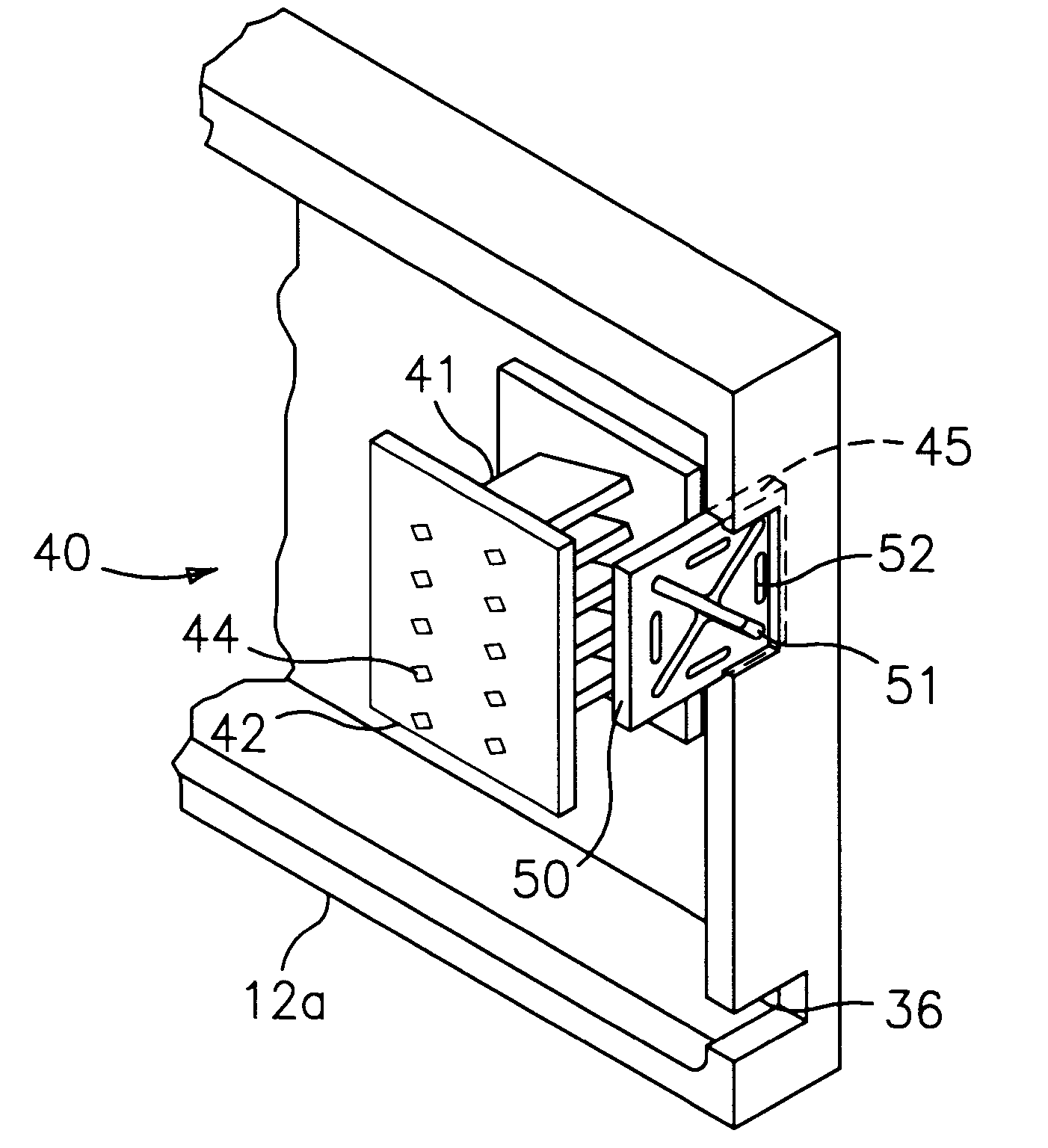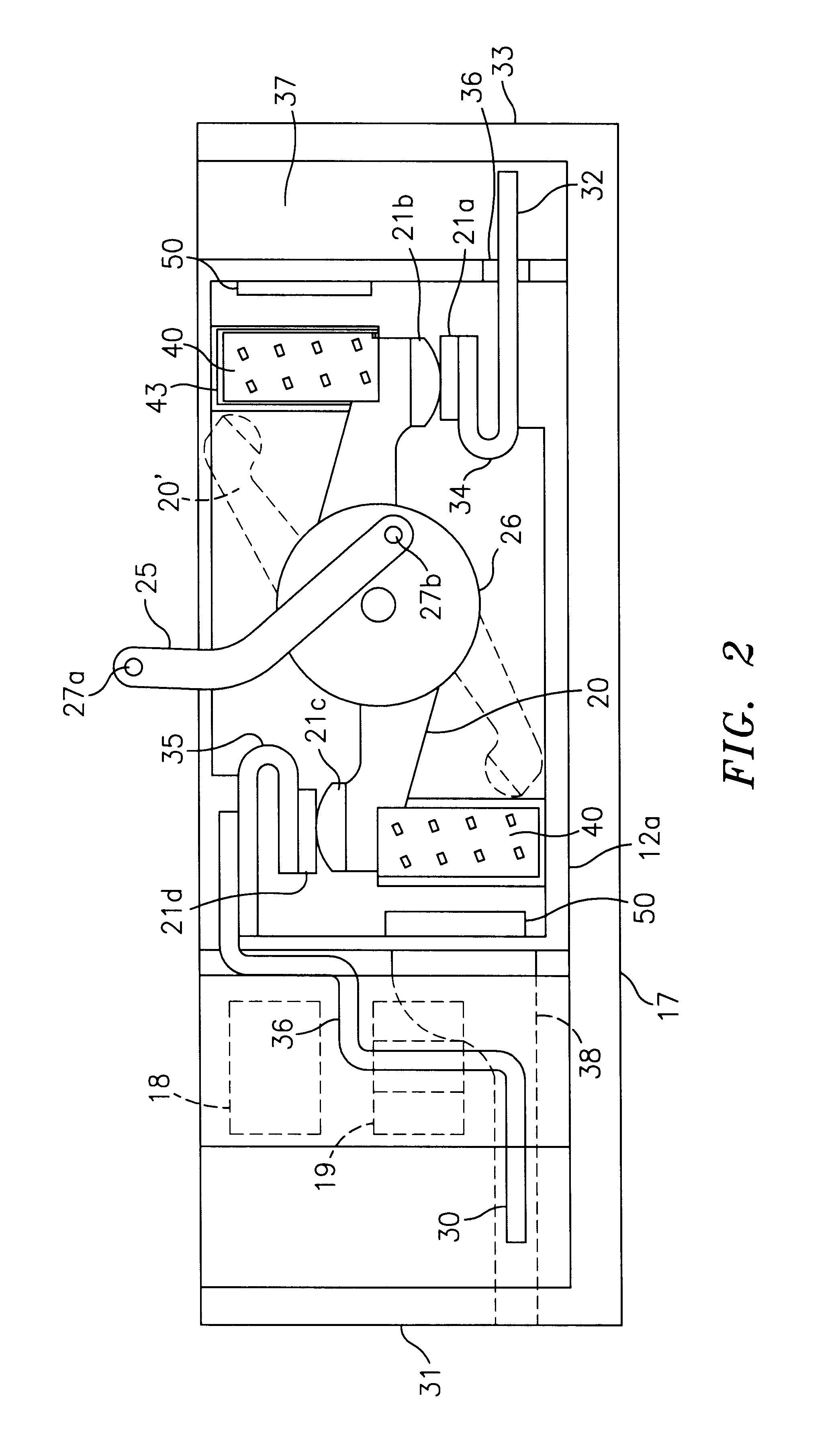Circuit breaker arc exhaust baffle with variable aperture
a circuit breaker and arc exhaust technology, applied in the direction of air-break switches, contacts, high-tension/heavy-dress switches, etc., can solve the problems of high arc pressure, eventual arc interruption, and increase the gas pressure of the arc chamber, so as to reduce the arc pressure. , the effect of constricting the ar
- Summary
- Abstract
- Description
- Claims
- Application Information
AI Technical Summary
Benefits of technology
Problems solved by technology
Method used
Image
Examples
Embodiment Construction
Circuit Breaker Overview
A circuit breaker 10 incorporating the present invention is depicted in the exploded isometric view of FIG. 1. Cassette 12, conventional trip unit 18 and conventional operating mechanism 16, are captivated and substantially enclosed between cover 11 and base 17 by fasteners, not shown. Cassette halves 12a,b are secured by fasteners, not shown, and positionally located in pocket 22 of case 17. Trip unit 18 is positionally located in pocket 23 of case 17. Extending through opening 13 of escutcheon 14 on cover 11 is operating handle 15, which is operatively connected between operating mechanism 16 and movable contact arm 20 for opening and closing electrical contacts 21a,b,c,d, best seen by referring to FIG. 2.
A conventional operating mechanism 16, well known to one skilled in the art and depicted generally in FIG. 1, is fully described in commonly assigned U.S. patent application Ser. No. 09 / 196,706 entitled "Circuit Breaker Mechanism for a Rotary Contact Syste...
PUM
 Login to View More
Login to View More Abstract
Description
Claims
Application Information
 Login to View More
Login to View More - R&D
- Intellectual Property
- Life Sciences
- Materials
- Tech Scout
- Unparalleled Data Quality
- Higher Quality Content
- 60% Fewer Hallucinations
Browse by: Latest US Patents, China's latest patents, Technical Efficacy Thesaurus, Application Domain, Technology Topic, Popular Technical Reports.
© 2025 PatSnap. All rights reserved.Legal|Privacy policy|Modern Slavery Act Transparency Statement|Sitemap|About US| Contact US: help@patsnap.com



